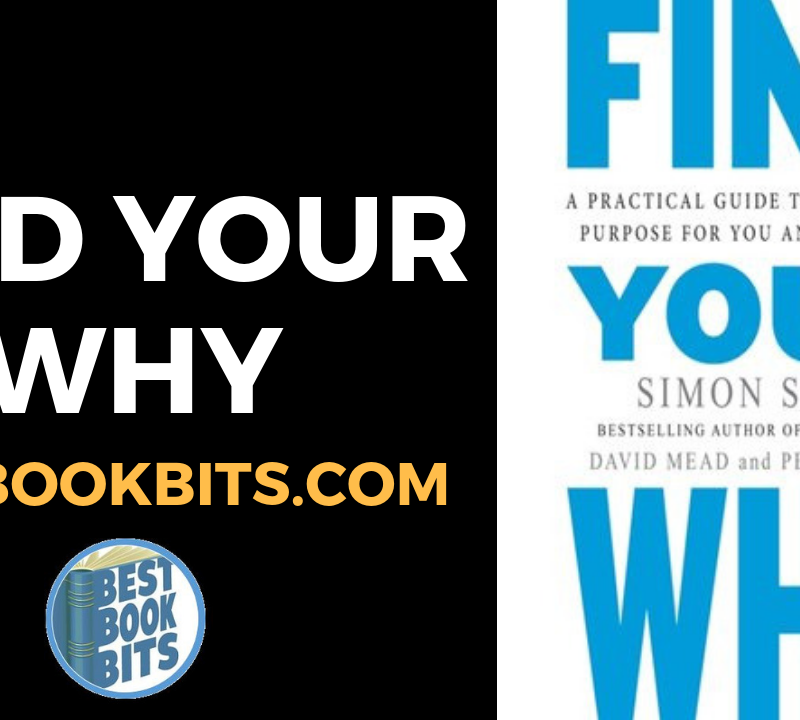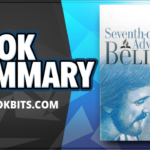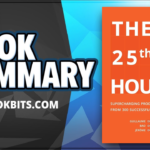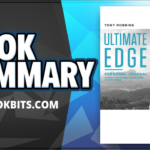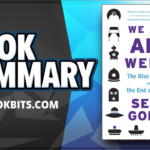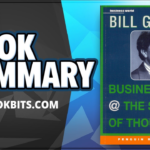★DOWNLOAD THIS FREE PDF SUMMARY HERE https://go.bestbookbits.com/freepdf
? MY FREE BOOK TO LIVING YOUR DREAM LIFE” https://go.bestbookbits.com/first-seven-steps
? SPONSOR BESTBOOKBITS BY USING PATREON https://www.patreon.com/bestbookbits
? SUPPORT BESTBOOKBITS BY CLICKING THE LINKS BELOW
150 PDF Summaries: https://go.bestbookbits.com/150
Coaching Program: https://go.bestbookbits.com/coaching
Subscribe to My Channel: https://www.youtube.com/bestbookbits?sub_confirmation=1
Website: https://bestbookbits.com
Instagram: https://www.instagram.com/bestbookbits
Spotify: https://open.spotify.com/show/0q8OW3dNrLISzyRSEovTBy
Facebook: https://www.facebook.com/michaelbestbookbits
Book Club: https://bestbookbits.com/bookclub/
Mailing List: https://mailchi.mp/d1dfc1907cdb/bestbookbits
People will work late into the night on one creative endeavor or another in the hope that their community – be it fellow designers, scientists, or computer hackers – acknowledge their contribution in the form of kudos and, just maybe, some measure of fame.
Threadless (Community driven T-shirt portal) isn’t really in the T-shirt business. It sells community.
Ross Zeitz, a 27 year old Threadless designer was hired to help run the community after his designs won a record breaking eight times on the community portal.
Labor can often be organized more efficiently in the context of community than it can in the context of a corporation. The best person to do a job is the one who most wants to do that job; and the best people to evaluate their performance are their friends and peers who, by the way, will enthusiastically pitch in to improve the final product simply for the sheer pleasure of helping one another and creating something beautiful from which they will all benefit.
The rise of the network allows us to exploit the fact of human labor that long predates the Internet. The ability to divvy up an overwhelming task – such as the writing of an exhaustive encyclopedia – into small enough chunks that completing it becomes not only feasible, but fun.
Crowdsourcing has the capacity to form a sort of perfect meritocracy. The quality of work takes precedence over pedigree, race, gender, age and qualification.
Crowdsourcing has revealed that, contrary to conventional wisdom, humans do not always behave in predictably self-interested patterns.
People are driven to contribute for a complex web of motivations, including a desire to create something from which the larger community would benefit as well as the sheer joy of practicing a craft at which they excel. People are inspired to contribute to crowdsourcing endeavors for similar motivations, though financial incentives also play a role, especially when the contributors hail from developing countries.
What unites all successful crowdsourcing efforts is a deep commitment to the community.
Compelling high resolution images have become ubiquitous, yet professional photo agencies treat them like a scarce resource. (iStockPhoto changes that equation)
Two shared attributes among almost all crowdsourcing projects:
– Participants are not primarily motivated by Money
– They are donating their leisure hours to the cause.
In this environment, the “professional” has never been more widely distrusted and the “amateur” more cheerfully embraced.
Crowdsourcing has no more regard for professional qualifications than it has for nationality. Companies like InnoCentive and iStock are meritocracies; all that matters is the final product. This is one of its greatest strengths.
The untrained eye is also untainted. Their (InnoCentive’s) greatest asset is a fresh pair of eyes, which is simply a restatement of the truism that with many eyes, all flaws become evident, and easily corrected.
Ken Thompson made Unix out of small, discrete programs meant to do one thing but to do it well. Such an architecture would eventually allow hundreds of programmers to work together in a totally decentralized fashion – in much the same way thousands of contributors work together today in a decentralized fashion to form a single reference work, Wikipedia. Breaking labor into little units, or modules, is one of the hallmarks of crowdsourcing.
“To build a new system, you don’t compete with the old one, you build a new system that makes the old one obsolete” – Buckminster Fuller
Hawthorne Heights (Indie Band) – Each musician would spend four to five hours online everyday, engaging their fans in banter and generally making themselves accessible. The fans loved it! The fans couldn’t believe they were actually getting a response, they had a fan for life because of that! By frequently updating their blog and swapping in new songs on their MySpace profile, Hawthorne Heights was able to give fans a reason to return.
Paid employees can be told what to do, online communities do what they want – Its often a price well worth paying.
Linda Parker (“Online communities editor”, for the Cincinati Post) – “It used to read, ‘Be a Citizen Journalist’ and no one ever clicked on it, then we said, “Tell us your story” and still nothing. For some reason, ‘Get Published’ were the magic words.”
Von Hippel (Head of the Innovation and Entrepreneurship Group at MIT’s Sloan School of Management) demonstrated that in fields as wide ranging as scientific instruments and mountain bikes and computer chips, the task of innovation was passing from the manufacturer to the user, who has both a greater need and a greater ability to improve a product’s performance. Companies that embraced this change entered into a creative relationship with their customers, even going so far as to provide them with tools to help design the end products.
★DOWNLOAD THIS FREE PDF SUMMARY HERE https://go.bestbookbits.com/freepdf
? MY FREE BOOK TO LIVING YOUR DREAM LIFE” https://go.bestbookbits.com/first-seven-steps
? SPONSOR BESTBOOKBITS BY USING PATREON https://www.patreon.com/bestbookbits
? SUPPORT BESTBOOKBITS BY CLICKING THE LINKS BELOW
150 PDF Summaries: https://go.bestbookbits.com/150
Coaching Program: https://go.bestbookbits.com/coaching
Subscribe to My Channel: https://www.youtube.com/bestbookbits?sub_confirmation=1
Website: https://bestbookbits.com
Instagram: https://www.instagram.com/bestbookbits
Spotify: https://open.spotify.com/show/0q8OW3dNrLISzyRSEovTBy
Facebook: https://www.facebook.com/michaelbestbookbits
Book Club: https://bestbookbits.com/bookclub/
Mailing List: https://mailchi.mp/d1dfc1907cdb/bestbookbits
Motivation is of 2 types
– Extrinsic – The Carrot (Financial Reward) and The Stick (A scolding from your boss)
– Intrinsic – goals such as creative fulfillment, a belief in the project, the sense of community obligation, the opportunity to enhance one’s reputation in the community.
What makes the online community a more efficient workforce than one managed by a firm? The short answer is that communities are better at both identifying talented people and evaluating their output.
The right person with the right combination of talent, willingness, and a few spare hours will take on the job. (Context – Wikipedia – who would write each of the 2.2 million entries on the portal)
TopCoder – unique model for community based software developement. They broke tasks down into the smallest possible discrete parts, the smaller the block, the more ways they could use it. A Job has to conform to a given individual’s “spare cycle”, or excess capacity – The hours between work and sleep.
The Difference: How the Power of Diversity Creates Better Groups, Firms, Schools and Societies. (Book released in 2007)
– The Diversity Trumps Ability Theorem – Given certain conditions, a randomly selected collection of problem solvers outperforms a collection of the best individual problem solvers.
The types of crowdsourcing that traffic in collective intelligence take three primary forms.
– The first category is the prediction market, or the information market, in which investors purchase “futures” pegged to some expected outcome, such as the winner of the Oscar for Best Picture, or the Presidential election.
– The second form is the problem solving, or crowdcasting, network, in which someone with a problem broadcasts it to a large, undefined network of potential solvers.
– The third category is the “idea jam” which is essentially just a massive online brainstorming session that takes place over the course of weeks instead of hours.
Collective intelligence works better in practice than it does in theory.
Crowdsourcing is rooted in a fundamentally egalitarian principle: every individual possesses some knowledge or talent that some other individual will find valuable. In the broadest terms, crowdsourcing involves making a connection between the two.
Mathworks (The company that developed MATLAB) – In an office full of developers, if one person solves a problem, everyone else will gather around to see how they did it, have their “aha” moment, then factor it into their own code. (Context – Matworks held a tourney in the 70s to solve the ‘Travelling Salesman Problem’ where people would submit algorithms to solve the problem and the most efficient algorithm would be declared the winner. But participants were allowed to steal each other’s code in order to create a better solution).
Based on the above, Mathworks noticed that the best algorithm at the end of the contest period exceeds the best algorithm from day one by a magnitude of one thousand.
The brown socks beat Mensa!
Advances are made in great leaps, which are followed by longer periods of minor tweaking.
Get enough people together – be it in a bar or a chat room – and a mysterious dynamic kicks in. People either accentuate their differences and polarize into opposing camps, or they downplay their differences altogether in order to reach a consensus. Both phenomena have the same net effect: The diversity within the crowd is diminished.
There are other conditions that must be met for diversity to trump ability
– First, it must be a pickle of a problem
– Secondly, the crowd must have some qualifications to solve the problem at hand. There must be a method of aggregating and processing each individual’s contribution.
– Finally, participants must be drawn from a large enough pool to guarantee a diverse array of approaches, and the ability to express their individuality – Their “local knowledge” – must not be impaired.
The group is smarter than its smartest individual. The mistakes cancel one another out, and correct answers, like cream, rise to the surface.
The odds of a solver’s success increased in fields in which they had no formal expertise. The farther the problem was from their specialized knowledge, the more likely it was to be solved.
Dell’s IdeaStorm employs another crucial element of crowdsourcing – the crowd’s collective opinion.
The ultimate success of one solution is not diminished by the number of unsuccessful solutions. As more people apply more diverse sets of problem solving methods, the odds that someone will crack the nut can’t help but go up. And if they’re wrong, you can just ignore them. But this truth only applies to crowdcasting projects like the Netflix Prize and InnoCentive. When we’re using the crowd to predict the future, every response counts in the final tally. In these cases, the role of diversity is far more complex.
Microsoft, Eli Lilly, Goldman Sachs, and Deustche Bank have all used prediction markets to help determine corporate strategy.
The reason diversity trumps ability in a problem – solving scenario is because you can always throw the idiots off the bus.
Before the rise of mass reproduction – there was far less of a distinction between audience and creator. New musical compositions were distributed as sheet music, which could then be interpreted according to regional preference and individual whim. Entertainment was a private affair composed of people entertaining one another. There were very few cultural products that we would describe as “hits” by today’s standards. This changed quickly and dramatically with the rise of modern technologies. The mass production and distribution of culture required a more passive form of consumption.
Crowdsourcing depends on the exceptions – Hand a camera to one hundred people and you’ll get 99 blurry snapshots and one indelible or salable image. The essence of crowdsourcing such creative work lies in culling the brilliant from the banal.
Crowdsourcing creative work involves cultivating a robust community composed of people with a deep and ongoing commitment to their craft and to one another.
The best ideas result in enhanced status for their authors. Others naturally strive to meet or exceed the standard set by most talented of their peers, a tendency that effectively increases the overall quality of the work produced by the community. Much of the interaction between community members revolves around improving their skills. People like to learn and they like to teach. The community has an unerring ability to identify its most talented members and highlight their work.
Crowdsourcing the stuff people make – as opposed to the stuff they already know – threatens to disrupt and ultimately displace established companies.
iStocker (Stock photography portal) – developed a credit system – a user could download one image for every image of theirs that had been downloaded by someone else.
People react with great hostility to the idea that crowdsourcing equals cost savings. No one wants to feel exploited.
If you are inviting the crowd to the party, you might as well ask them to help with the planning and cleanup. The crowd likes to be involved.
It is not so much about giving the crowd easier tasks, as it is about building a strategy around the fact that different people are good at different things, have different amounts of time to commit, or simply have different interests.
Pioneers – they are the ones with arrows in their backs.
We had far more guests than anticipated and we didn’t have anyone to greet them when they showed up. It was a fateful mistake. (Context – AssignmentZero, a collaboration between Wired and NewAssignment.net started a community portal but launched without having someone upfront who would manage the community.)
Don’t try to control the discussion, just provide the room in which it takes place.
You can’t issue directives to a community, you can only offer suggestions. If people follow you, great. If not, you follow the community.
AssignmentZero’s community of journalists ensured that the interviewer was well informed, asked challenging questions, and managed to elicit interesting commentary.
Most participants will have very little to contribute – tasks have to be constructed to accommodate a range of commitment levels.
American Idol heralded the dawn of a new era. Voting was no longer something you did every couple of years; it was something you did every few days over your cellphone. Voting became part of the culture. Today, people have the opportunity to vote for everything.
The contributions generated by the crowd are far too numerous for anyone but the crowd itself to filter.
Only the collective attention of the crowd, and its enthusiastic embrace of the five-star system, has the manpower – to create an effective filter.
Collective decisions made by millions of Internet users is being used to create a comprehensive classification system where users vote on which news stories of the day deserve attention. (Context – Digg.com)
Sturgeon’s Law – 90% of everything is crap.
The 1:10:89 Rule – For every given 100 people, 1 will actually create something, 10 will vote on what he created and the remaining 89% will merely consume.
Threadless (T-shirt makers) – All products sold by Threadless are inspected and approved by user consensus before any larger investment is made into a new product. Users also have the ability to check the ‘I’d buy it!’ box next to the scale.- a strategy called “collective customer commitment”. The dual benefits of giving your customers a vote is you have their commitment and the company knows how much demand exists for every shirt it produces. Small wonder then that every shirt sells out.
Crowdfunding – Directly connecting the people who have money to the people who need it.
Matt and Jessica Flannery, founders of Kiva.org (a micro lending site)
Who better to decide what should be created than the person who will ultimately consume the product?
Ten Rules of Crowdsourcing
– Pick the Right Model (successful crowdsourcing projects use a combination of these approaches)
– Collective intelligence or crowd wisdom
– Crowd Creation
– Crowd Voting
– Crowd Funding
– Pick the Right Crowd
– Offer the right incentives
Attracting a crowd is much easier than keeping them. The most important component to a successful crowdsourcing effort is a vibrant, committed community and understanding what motivates people to contribute in the first place. People need to feel rewarded for their efforts.
– Keep the pink slips in the drawer.
An editor’s role will be to lead a conversation, not to deliver a monologue.
– The dumbness of crowds, or the Benevolent Dictator Principle
People might be enthusiastic and capable of some level of self organization but they also require directions and guidance and someone to answer their questions. Most successful crowdsourcing efforts are products of a robust collaboration between the crowd and the individuals guiding them. These people focussed the collective and corrected for some of the common hive mind failure modes.
– Keep it simple and break it down
Modules that can be independently produced before they are assembled into a whole.
– Remember Sturgeon’s Law
– Real talent will remain a rare commodity.
– Remember the 10%, the Antidote to Sturgeon’s law.
If you find yourself inundated with submissions, don’t bother sifting through them yourself. Allowing the crowd to find the best and brightest diamonds in the rough.
– The community is always right
Communities need a decider (as well as a helping hand, a shoulder to cry on, and occasional dean of discipline. You can try to guide the community, but ultimately, wind up following them.
– Ask not what the crowd can do for you, but what you can do for the crowd.
Crowdsourcing works best when an individual or company gives the crowd something it wants. People are drawn to participate because some psychological, social or emotional need is being met. And the need isn’t met, they don’t participate.
★DOWNLOAD THIS FREE PDF SUMMARY HERE https://go.bestbookbits.com/freepdf
? MY FREE BOOK TO LIVING YOUR DREAM LIFE” https://go.bestbookbits.com/first-seven-steps
? SPONSOR BESTBOOKBITS BY USING PATREON https://www.patreon.com/bestbookbits
? SUPPORT BESTBOOKBITS BY CLICKING THE LINKS BELOW
150 PDF Summaries: https://go.bestbookbits.com/150
Coaching Program: https://go.bestbookbits.com/coaching
Subscribe to My Channel: https://www.youtube.com/bestbookbits?sub_confirmation=1
Website: https://bestbookbits.com
Instagram: https://www.instagram.com/bestbookbits
Spotify: https://open.spotify.com/show/0q8OW3dNrLISzyRSEovTBy
Facebook: https://www.facebook.com/michaelbestbookbits
Book Club: https://bestbookbits.com/bookclub/
Mailing List: https://mailchi.mp/d1dfc1907cdb/bestbookbits



